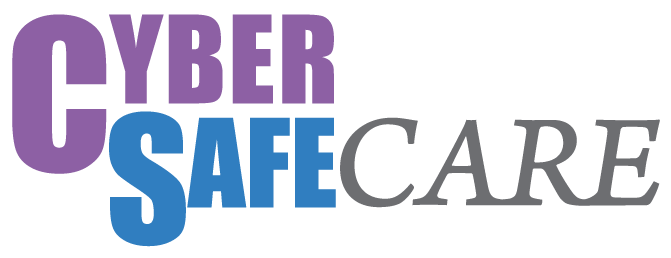Online Safety
Parenting in a Digital Age: Understanding Kids and Technology
Resources for caregivers on how youth use technology and more (PREVNet)
Online Safety Rules for Kids
Recommended internet rules for children to follow. (Canada Safety Council)
Kids’ Safety Online – Canadian Red Cross
How to detect online dangers and keep kids safe while online and offline, including warning signs. Also, training courses on violence, bullying, and abuse prevention. (Canadian Red Cross)
Privacy and Internet Safety Tips
Internet Safety – Tips and Resources
Advice to keep children and teens safe on the internet including Internet Safety: My Online World and an online safety lesson plan. (RCMP National Child Exploitation Co-ordination Centre )
Internet Safety
Canada’s national tip line to report online sexual exploitation of children provides information to keep children safe online. (Cypertip)
Privacy and Internet Safety
Resources for caregivers, educators, and advocates on privacy and internet safety, including videos, 6 Ways Your Kids Can Protect Their Online Identities, 5 Internet Safety Tips for Kids, and 5 Surefire Ways to Protect Your Kid’s Online Privacy. Resources are available for different age groups (Common Sense Media).
For Parents
Tips on managing screen time, helping kids deal with cyberbullying, information on cybersecurity, digital health, excessive internet use, and more (Media Smarts).
Four Tips for Managing Your Kids’ Screen Time
The tip sheet outlines four important steps caregivers can take to keep screen time under control and make screen use a valuable part of your kids’ lives (Media Smarts).
Are You Web Aware? A Checklist for Parents
The checklist for caregivers asks questions about knowledge of your kid’s online activity, rules in place for internet use, and making careful choices before posting online (Media Smarts).
Cybersecurity and Technology
Cybersecurity
Resources on cybersecurity, including information on spam, scams, frauds and identity theft; software threats; special issues for children; and resources for caregivers (Media Smarts).
Resources for Parents
The skills-based violence prevention program offers gender-specific information, resources, programs, and training, including resources for parents on bullying, online technology and cybersafety (Safeteen.ca).
Protectkidsonline.ca
The resource aims to help caregivers stay on top of the digital world their children are engaging in, providing information about online interests of youth and the risks and more.
How Kids Use Tech
A breakdown on how kids choose to interact with technology changes. Information is in three categories: young children, tweens, and teens (PREVNet).
Guides, Toolkits, Tutorials and Help
A Guide for Trusted Adults
The guide, compiled in collaboration with YMCA Canada, provides practical tips and tools for supporting girls and young women navigating life online (Media Smarts).
Digital Resilience Toolkit
For caregivers and youth on how to become more resilient online and cope with what the online world has to throw at you. (Internet Matters)
e-Parenting Tutorial: Keeping Up With Your Kids’ Online Activities
A cyber-savvy mom takes caregivers through all they need to know about their children’s online activities in this interactive online module (Media Smarts).
NeedHelpNow.ca
Resources on cybersafety, including how to respond to a youth in crisis, reporting online harassment and cyberbullying and the law, as well as removing pictures/videos.
Policies and PEI Schools
Digital Citizenship and Technology in Schools
The Digital Citizenship and Technology in Schools policy outlines regulations about the use of communication and technology within the Public Schools Branch's 56 schools by its students, employees, and any other user defined by the policy (Public Schools Branch).
Safe and Caring Learning Environments Policy
The Safe and Caring Learning Environments operational policy sets out the expectations for creating and maintaining a safe, caring, respectful and inclusive climate for learning and working, while promoting a shared responsibility of the school community to create and maintain a positive school climate, which includes addressing cyberbullying (Public Schools Branch).
Safe and Caring Learning Environments Operational Procedure
The Safe and Caring Learning Environments Operational Procedure outlinines the procedures that take place regarding a variety of incidents, including cyberbullying (Public Schools Branch)
Safe and Caring Learning Environments Incident Response Guide
The Safe and Caring Learning Environments Response Guide outlines steps to be taken in responding to incidents outlined in the policy and operational procedure, including cyberbullying (Public Schools Branch).
List of Prince Edward Island Schools/websites
Prince Edward Island’s Public Schools Branch in its Safe and Learning Environments Policy tasked each of its schools to have in place a Code of Conduct. To see if your school has its own Code of Conduct, visit their website or contact your school. The listing also includes the schools of the French Language School Board (PEI Department of Education and Lifelong Learning).
Public Schools Branch
The Public Schools Branch encompasses the 56 English-language schools in the province, and the more than 19,000 students who attend those schools.
La Commission scolaire de langue francaise (French Language School Board)
La Commission scolaire de langue francaise is an Acadian and Francophone collective that offers French-language education to students with the focus on promoting and developing its language and culture.
